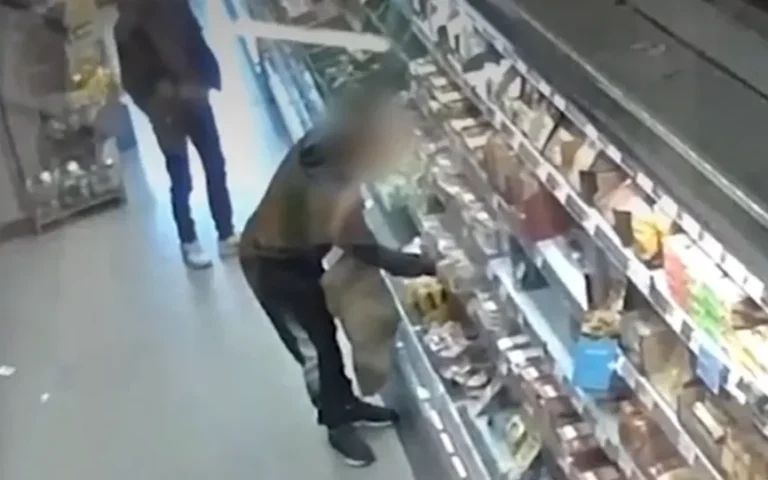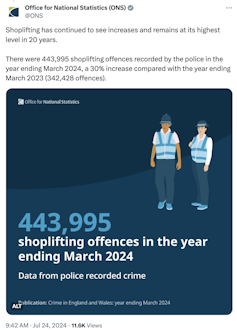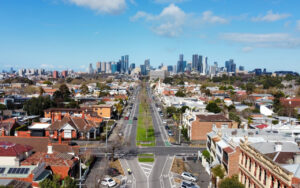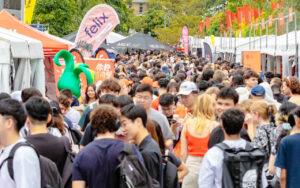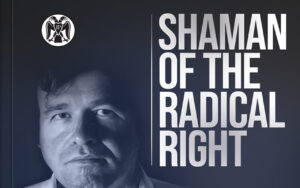Charlotte Wildman, University of Manchester
Wherever you are on the political spectrum, shoplifting has come to symbolise today’s “broken Britain”. On the left, it is an inevitable product of the cost of living crisis and poverty, fuelled in part by growing levels of drug and alcohol addiction. On the right, it is a damning symptom of ineffectual policing and the general decline in respect for authority and property.
Nigel Farage’s announcement that he was standing in the 2024 general election included the claim that in modern Britain: “You can go shoplifting and nick up to 200 quid’s worth of kit before anyone is even going to prosecute you.” While police chiefs have denied this claim, shoplifting was identified by most parties as a key issue for voters and businesses alike, with then-policing minister Chris Philp calling it “a blight on our high streets and communities”.
Annual shoplifting offences in England and Wales went up 30% in 2024 to a record of almost 444,000 cases logged by police. The British Retail Consortium’s 2024 crime survey estimated that shoplifting now costs retailers almost £1.8 billion – a huge rise on the previous year’s total.
Yet a new analysis by The Times appeared to confirm Farage’s critique, concluding that “police officers have almost entirely ceased punishing shoplifters, despite the number of offences soaring to record levels”. In response, the home secretary, Yvette Cooper, promised to “end the shameful neglect” of shoplifting by police. In its first king’s speech, the new government announced legislation to tackle low-level shoplifting, including a new offence of assaulting a shopworker.
Will it make a difference? My research into the history of shoplifting shows there are many reasons driving the inexorable rise of this fascinating, complicated crime.
Traditionally, female thieves were more often described as shoplifters than their male counterparts because of the gendered perception of shops and shopping. And treatment of shop thieves – and even perceptions of the seriousness of their crime – have long been linked with the class and race of those accused.
Changes in shopping layouts and technology are also key factors. More than 40% of 2,500 people answering a recent survey of UK shoppers admitted to having shoplifted – with the growing prevalence of self-service checkouts identified as a key reason for their thefts. Archie Norman, chairman of Marks & Spencer, has blamed faulty self-checkouts for encouraging more affluent shoplifters to think: “It’s not my fault, I’m owed it”. One self-declared middle-class shoplifter, writing anonymously, explained that “I don’t even see it as shoplifting”:
It is so easy. I’ve stolen baby grows, bibs, waterwipes, tins of tomatoes (the posh brands), linwoods seed mix, organic salmon (that’s never security tagged like the meat), sourdough crumpets, organic milk, a huge assortment of vegetables (no one ever checks the ginger), toilet paper, butter (that has gotten SO expensive), the list goes on …
While Booths recently removed self-checkouts from almost all of its supermarkets, other chains have increased security measures – introducing barriers, dummy display packaging and body-worn cameras to try to curb the rising rate of self-checkout theft. Many are testing the use of AI and facial recognition technology to identify past shoplifters.
From the earliest accounts of shoplifting, when thieves risked execution for stealing just a few items, history shows us this is a crime rooted in complex societal as well as economic issues. For some shoplifters, whether poor or affluent, it is claimed to be a form of protest in response to growing inequalities and extortionate profiteering. The question is, who deserves our sympathy: the robbers or the robbed?
The earliest days of shoplifting
One of the earliest recorded cases of a theft described as “shoplifting” occurred in 1678, when two women were convicted of stealing from a London shop. The Old Bailey court report noted that:
Shoplifting (as they call it) is a practice become so frequent, that a Tradesman scarce dares trust his Wares to Customers view, they have so often been robb’d under pretence of buying.
Around this time, Britain’s shopping culture was being transformed by the building of new towns and growing availability of luxury imported goods. But with these came the scourge of shoplifting – regarded as an assault on the business of shopkeeping, a trade which centred small retailers as the backbone of the nation.
Shoplifting was by no means seen as a mere misdemeanour. In 1714, 28-year-old Margaret Stevenson was sentenced to death for stealing a piece of green Persian silk from a London shop. The Old Bailey record stated that she “came pretending to buy, and the Shop being pretty full, she found an opportunity to take the Goods, and go away”.
In fact, Stevenson – who was known by several aliases – had already had one death sentence pardoned by Queen Anne the previous year (also for stealing silk from a shop). This time there was no reprieve: she was executed at Newgate prison in the City of London on July 16 1714.

The case of Stevenson – who probably took the silks to sell on to what was by then a thriving illegal market for stolen clothing – shows how shoplifting, luxury goods and new forms of retailing developed hand-in-hand. And it reflects an early characteristic of shoplifting across Europe and North America – that it was widely perceived to be a “feminine crime”.
As towns and cities grew in the 18th century, so did fears about the corrupting impact of urban life on respectable women. Public space was associated with danger, risk and crime, and shops were among the few places it was seen as “acceptable” for women to appear in public. But while shopping offered women a rare opportunity to escape the home, it could sometimes lead to trouble for them.
In 1799, Jane Leigh Perrot – aunt of the novelist Jane Austen – was accused by a Bath shopkeeper of stealing a card of lace worth 20 shillings. Perrot claimed not to know she had it in her possession, but her arrest and subsequent trial attracted national media scrutiny as a well-known member of “polite society” in Bath.
In a foreshadowing of the modern trend for shoplifting to be judged according to the perpetrator’s social class, Perrot’s defence tried to portray the shopkeeper in a bad light while drawing on a succession of character witnesses to testify to her good character. By emphasising her wealth, Perrot’s own statement aimed to convince the jury that she had no reason to steal:
With supplies so ample that I was left rich after every wish was gratified, what could induce me to commit such a crime? Can you suppose that disposition so totally altered as to lose all recollection of the situation I held in society, to hazard for this meanness my character and reputation?
Perrot was found not guilty. According to crime historian Tammy Whitlock, this case “tested the concept of middle-class feminine moral inviolability”. In years to come, the verdict may have emboldened other privileged shoppers to behave recklessly, secure in the knowledge that claims of ignorance, error and naivety could be effective methods of defence – provided they came with sufficient social standing.
Women as victims and criminals
The death penalty for shoplifting was scrapped in 1832 as part of a broader reform of draconian legislation that penal reformers termed “Britain’s bloody code”. The use of execution for minor offences was seen as out of touch with public opinion: a 2018 analysis of historical Old Bailey trials found that juries had been reluctant to convict when there was a chance a “minor offender” would be sentenced to death – particularly when women were in the dock.
So, this change in legislation probably reflected a desire to get tougher on minor crimes such as shoplifting, which was proving increasingly difficult to stamp out. The emerging model of large emporiums selling many products under one roof – the roots of modern department stores – fed public fears about shoppers being unable to control themselves among the proliferation of goods. Even a century later, while speaking in support of local women “in extreme poverty” who faced shoplifting charges, Glasgow MP John McGovern warned that “open-counter stores are a direct encouragement to people in poor circumstances to steal”.
Changes in the shopping environment blurred the boundaries as to who was the real victim of shoplifting crimes. The new emporiums were viewed by some as destroying the traditional character of English shopkeepers as that backbone of the nation. Concerns arose that “innocent” affluent women, in particular, risked being blackmailed by ruthless shopkeepers who would falsely accuse them of shoplifting in order to extort money.
In the mid-19th century, the term kleptomania emerged alongside broader medical categories of feminine illness, such as hysteria. It became a popular medical term to explain the rise of the middle-class department store thief, and stressed women’s alleged mental weakness. Kleptomania remains one of very few psychiatric disorders in which crime is medicalised and can be used as a legal defence.
This categorisation was both inherently gendered and reinforced class hierarchies. As Elaine Abelson notes in her history of theft and American department stores, When Ladies Go A-thieving (1992): “Middle-class women suffered from kleptomania; lower-class women were classified as thieves”.
The notorious Forty Thieves
Around the start of the 20th century, the perceived prevalence of female shoplifters encapsulated broader (male) societal fears about women’s increasing independence in the world. London’s all-female crime syndicate, the notorious Forty Thieves gang (also known as the Forty Elephants), operated from the Elephant and Castle area. From 1915, they were led by Alice Diamond, a career criminal known for her outlandish thefts and ability to thwart detection.
“I didn’t realise it then, but Alice had big shoplifting drawers on,” recalled her sometime criminal colleague, Shirley Pitts, in the acclaimed biography Gone Shopping (published posthumously in 1996):
As we walked round the shop, she kept asking me: ‘Will this fit your brother … will this fit your sister?’ Every time I said ‘yes’, she put some stuff into a holdall bag she had with her.
Pitts, who would herself become known as the “Queen of Shoplifters” on account of her exploits, said that Diamond and her gang “were like film stars to me. They had furs, beautiful makeup … They arrived for me in a Chrysler car, and I thought I was going to heaven, not out thieving.”
The Forty Thieves were associated with “flapper” culture – the broader term for the growing number of independent, fearless young women who refused to adhere to traditional gender roles and reflected the glamour and rebellion of post-first world war femininity. The gang’s reputation for mobility and, in particular, frequent use of cars to carry out its crimes threatened to transgress “acceptable” boundaries of female behaviour, and reflected wider public concern about shifting gender roles following the end of the war.
As criminal historian, Alyson Brown, wrote for The Conversation: “The ‘New Woman’ in her criminal guise, the bobbed-haired bandit, was shocking on many levels. She was depicted as ‘fast’ – not only in terms of speed, but also of morality.”
Shopkeepers and magistrates called for stiffer sentences: by the early 20th century, most women convicted of shoplifting, especially if they were middle-class, tended to receive a fine or were placed on probation and the courts tended to only imprison repeat offenders or those deemed “professional” thieves.
Whether focusing on “absent-minded” middle-class housewives or working-class career criminals, the public view of shoplifting as a gendered pursuit unlike other crimes persisted. In 1959, The Times reported that female shoplifters outnumbered men by almost two to one.
While that is not true today, shoplifting is still a much more common crime among imprisoned women than imprisoned men (36% compared with 11%). At the same time, concerns about the deprioritisation of the crime among police forces grow louder:
Shoplifting, with its connotations of petty, opportunistic offending, appears to have been a casualty of [successive UK governments’] exercise in cloth-cutting. The reality is, however, that shoplifting is far from trivial in its consequences … [It] is a euphemism masking a spiralling epidemic of criminality taking place in the heart of communities, crippling business and spreading fear.
A retail revolution
Another factor muddying the treatment of shoplifters was the idea that the new layouts of department stores and other shops were “enticing” people to steal. At the start of the 20th century, new marketing and retail methods imported from the US saw large numbers of goods placed in closer proximity to the customer, introduced eye-catching displays and in-store demonstrations and events that attracted shoppers in much bigger numbers.
In 1904, the Daily Mail worried that the trend for department stores to have large open displays and reduced-price sales where high quantities of items were placed on the shop floor and piled on tables, could be manipulated by shoplifters, warning: “The shoplifter strolls up to a counter and begins toying with the articles, at the same time bargaining with the salesman over an intended purchase of small value”, before sneaking things into a half-open umbrella, their wide sleeve, or sneak into a child’s coat where they have inserted extra-large pockets.
In London, American retail tycoon Harry Gordon Selfridge opened his flagship Oxford Street store in 1909, moving towards a more inclusive and open retailing ethos that presented shopping as pleasure. An estimated 90,000 customers visited Selfridges on its opening day and over a million in its first week, according to Lindy Woodhead’s book Shopping, Seduction and Mr Selfridge.
Selfridges revolutionised shopping by moving away from the old practice of keeping goods hidden behind glass-fronted cupboards requiring the assistance of a shopworker to access items. New consumer items such as cosmetics were put on display for customers to access – and potentially steal – easily.
Other retailers followed suit, especially newly expanding chain stores such as Woolworths, Lewis’s and Marks & Spencer. As a result, the counter system was widely linked with fears of an epidemic of shoplifting.
Concerns around the rise of thefts led to legislative change and a clearer legal framing of shoplifting in the criminal justice system. The British government began recording thefts from shops as a standalone offence in 1934. There were 12,976 known shoplifting offences that year – a figure that has since risen to 443,995 incidents in 2024.
Yet, the government had limited sympathy for owners of the shops affected by this crime. In May 1934, then-home secretary Sir John Gilmour was asked in the House of Commons if, “in view of the increase of women shoplifters, any special steps are taken to investigate these cases from a pathological standpoint?” Gilmour refuted this notion, instead reminding larger shopping establishments that “it is necessary to have more assistants attending to the stocks that are displayed, instead of having people walking about examining the stocks without supervision”.
In 1938, a 38-year-old woman from Tooting received a one-day detention for stealing shoes and stockings from Marks & Spencer. The presiding magistrate, Claud Mullins, refused to send her to prison “because he suggested the firm did not take proper precautions to prevent their goods from being stolen”. Mullins concluded: “I am not going to fill Holloway [prison] with people who steal from that firm, because they don’t look after their own goods.”
Self-service and shoplifting
After the second world war, British high streets were transformed by the introduction of self-service supermarkets, where customers helped themselves to goods as they walked around stores and paid when they had selected everything they wanted. The Co-op introduced the first such permanent self-service store in Manor Park, east London, in 1948. By 1957, one in six Co-op stores were self-service.
Alongside the rapid growth of self-service grocery shops – from 500 in 1950 to 28,000 in 1970 – there was also a rapid increase in the rate of shoplifting, which more than trebled from 23,308 known cases in 1955 to 78,490 incidents in 1968. In 1959, the Magistrates Association told The Times that “an increase in recent years in the number of self-service and open counter shops has coincided with a rise in the number of convictions for shoplifting” and suggested that “one may be a direct result of the other”. In her biography, Pitts recalled that “it was much easier to shoplift in the mid-1950s”:
Most of the big department stores lined up the furs and suits on racks. The security devices then were quite pathetic … we would just throw things over our arms and walk out the shops.
Eileen MacKenney, a shoplifting associate of Pitts, called the rise of chain stores like C&A, BHS and John Lewis “manna from fucking heaven for someone like me” in her 2011 autobiography, Borstal Girl.
Supermarkets played a key role in changing the relationship between consumers and retailers – including in regard to theft. By the 1960s, even some retailers accepted “the self-service environment was encouraging shoplifting by placing consumers in direct contact with the goods, in a context where desire for the merchandise was being actively cultivated through packaging, displays and advertising”.
MacKenney recalled the thrill of these retail changes in the 1960s for prolific shoplifters like herself:
Huge supermarkets were popping up everywhere – I’ll never forget when I first saw one, there was food everywhere, readily available to be nicked. Nobody would ever be hungry again! [Supermarkets] were like Aladdin’s caves to someone as light-fingered as me.
Margaret Thatcher’s election as prime minister in 1979 came with strong language about cracking down on crime. Yet the levels of UK shoplifting continued to rise throughout the 1980s, increasing from just over 200,000 offences in 1980 to more than 250,000 a decade later.
In reality, the Thatcher government largely put the onus on retailers to detect offenders. In 1986, the Home Office told stores to reduce shoplifting themselves “rather than placing undue emphasis on arrests” to curb the £1 billion that was being lost to shops in Britain every year.
In turn, heavy-handed policies from retailers led to concerns that some “innocent” shoppers were being penalised. The “accidental middle-class shoplifter” became an enduring motif in the class-informed legal and societal responses to shoplifters. Other people, however, had a very different experience when they walked into a shop to check out its offerings.
Racial profiling
In many shops, from convenience stores and supermarkets to clothing retailers, I’ve noticed that I get followed by staff members most of the time. Initially, I dismissed these occurrences as coincidences. Over time, however, the frequency, patterns and consistency of these instances left little room for doubt – I am being racially profiled. (Guardian reader’s letter, June 2023.)
There are numerous examples of police and the judiciary being particularly harsh towards migrant women who were caught shoplifting – including in 1962, when Carmen Bryan, a 22-year-old Jamaican woman, was nearly deported following a conviction for shoplifting goods worth less than £2.
Having emigrated to Britain two years earlier, Bryan had experienced periods of unemployment and was receiving state welfare when she pleaded guilty to the shoplifting charge. It was her first offence, yet she was recommended for deportation and remanded in Holloway prison, due to legislation that aimed to expel migrants who offended while in Britain.
Bryan’s deportation order was eventually cancelled following support from opposition Labour MP George Brown. But the then-home secretary, Henry Brooke, warned that others “are not to think, if they commit an offence and are recommended for deportation, they can count on escaping because of the case of Miss Bryan”.
This case is still relevant, particularly in light of amendments to legislation by the last government in 2021, that mean migrants – including those with settled status – risk being deported for minor offences such as shoplifting. People from minority ethnic backgrounds are more likely to be wrongly suspected of shoplifting: an ICM poll in 2018 found this had happened to 38% of people from ethnic minorities over the previous five years, compared with 14% of white people.
In 2023, Aldi promised an investigation into claims of racial profiling when a black woman was wrongly accused of shoplifting. Aldi told the Independent at the time that it was a case of “mistaken identity” and denied its staff member was racist. Similar complaints have been made about other shops including Tesco, which recently apologised to a customer who complained of being followed by two security guards for no apparent reason.
The writer of the letter quoted earlier explained the toll that being racially profiled for shoplifting had taken on their mental health, adding that discussing the issue with customer service teams at well-known stores had not led to any change in policy. In the US, 17 major retailers signed a charter in 2022 promising to reduce racial discrimination experienced by customers, but there is no sign of a comparable scheme in the UK.
Rather, the introduction of a new policing strategy that relies on facial recognition technology has raised fears this will widen racial inequalities with regard to crimes including shoplifting. In October 2023, 14 human rights groups wrote to major UK retailers to complain about their involvement in a government-backed scheme to address shoplifting:
Facial recognition technology notoriously misidentifies people of colour, women and LGBTQ+ people, meaning that already marginalised groups are more likely to be subject to an invasive stop by police, or at increased risk of physical surveillance, monitoring and harassment by workers in your stores.
The victims of shoplifting
Shoplifting is often considered a “victimless” crime because of popular attitudes around the large profits made by big business, and sometimes even local shopkeepers who are seen as rich.
Whereas large retailers may be able to absorb some losses and factor in the costs of shoplifting into their pricing structure, smaller shop owners are particularly badly affected by theft. One shopkeeper explained in a recent newspaper article the financial damage caused by a shoplifter who took £60 worth of beer: “He took it within two minutes. That takes me almost half a day to earn.”
The Federation of Small Businesses has highlighted the “growing number of reports of organised shoplifting and threatening behaviour towards shop owners and their staff”. Indeed, shoplifting may well have contributed to the problems plaguing the demise of the local high street: back in 1996, seven out of ten shopkeepers said they expected to go out of business in the next decade due to the cost of crime and their inability to compete with large stores.
The following year, a Kent shop closed because of the combination of shoplifters and high running costs made it unaffordable. “We have got to admit defeat,” the owners of mini-supermarket Cracker told the Sheerness Times Guardian: “It needs two of us in the shop to keep a look out for shoplifters. We lose a high percentage of stock to theft.”
Shopkeepers were also reporting increasing occurrences of violent thefts. After four youths stole £700 worth of goods and left the shopkeeper with a broken nose and hand, Rita Walsh of the Burnley and District Chamber of Trade stated:
People who are in premises on their own can feel quite fearful. People in stores have gone past the days of chasing shoplifters. It’s not good, but this is unfortunately a reflection of the times we live in.
The problem of violence towards shop staff was addressed in Scotland by a specific law introduced in 2021 to protect shop staff. But in April 2024, the Scottish Grocers’ Federation complained the law was still falling short, as although Police Scotland reported over 10,000 cases had been brought under this act in its first three years, there had only been 1,200 convictions due to a backlog in the courts.
Nevertheless, retail bosses are keen to see similar legislation in England and Wales. One of the first acts of the new government was to bring in “stronger measures to tackle low-level shoplifting”. Its first king’s speech brought amendments to the Crime and Policing Bill, including making assaulting a shopworker a standalone offence, in line with Scotland.
The promise of this new legislation has been embraced by the retail world, with the Co-op’s Paul Gerrard deeming it “a seismic shift in the crackdown on retail crime”. James Lowman, chief executive of the Association of Convenience Stores, was “encouraged by the specific reference to tackling shoplifting, which is the blight of so many communities and funds the activity of gangs, addicts and dangerous criminals”.
Criminologists identify growing evidence of organised crime groups in shoplifting because it is seen as “a low-risk, high-reward venture”. The previous UK government promised to treat shoplifting “like organised crime” – its focus on improving intelligence sharing led to Project Pegasus, a policing and business partnership which promised to provide, for the first time, “an accurate national picture of the organised groups, from local families to cross-border criminals, driving organised shop theft”.
Yet once again, retailers are not the only victims here. In December 2023, an episode of File on 4 explored how vulnerable women and children were made to steal high-value cosmetics and fragrances on behalf of men running the criminal gangs, who largely managed to avoid detection. Many of the women and children were caught in a cycle of shoplifting after being released following short periods of imprisonment. According to Adam Ratcliffe from the Safer Business Network:
It’s a godawful life for these people – they are vulnerable and have been exploited. Their lives are horrific. They are living in houses of multiple occupancy – 30, 40 of them at a time, sleeping on mattresses in dirty rooms, being used and abused as criminals for financial gain.
Shoplifting as a form of protest
Today, shoplifting has become a symbol of broader social ills. To some, it is a symbol of excessive immigration, lax policing, national decline, lawlessness and breakdowns in communities. To others, it encapsulates the pernicious grip of racism, elitism and othering in the way Britain’s problems are portrayed and prosecuted.
But how does the UK compare with the rest of the world? In the US, research suggests shoplifting has risen in recent years but remains lower than pre-pandemic levels. In New York, where rates of shoplifting crime are far higher than the national average, law enforcement officials and trade groups suggest it is not a product of high living costs but organised crime, repeat offenders and lenient legislation. In Japan, which has traditionally had comparatively low rates of crime, there are concerns about a rise in shoplifting due to the prevalence of self-checkout tills.
But there is another dimension to shoplifting that could in part explain its growth in Britain and around the world – namely, a form of protest at the state of society and the perpetrator’s place in it.
During my historical research, I’ve been struck that shoplifters would often only target certain shops while avoiding stealing from others. In the 1930s, for example, many thieves stole from Woolworths, Lewis’s and Marks & Spencer – but, according to the court records and my other sources, less often from shops like their local branch of the Co-operative, where customers received a dividend in return for shopping there.
In memoirs by writers who turned to shoplifting after experiencing poverty and other hardships, many refer to the “buzz” it gave them amid their unhappy lives – but also, that it is a way to try and assert some agency when you are powerless. While MacKenney relied on shoplifting in the 1950s to support her young family, she acknowledged it represented something beyond monetary gain:
We might have been villains to some people, but we never saw ourselves as anything other than ordinary people … Everyone was at it – the rich were stealing from the poor, and the poor were stealing it back from the rich.
My research into the practice of women buying and selling stolen goods to each other suggests engagement in theft helped reinforce their position in strong, supportive networks against a society that afforded them little formal power. Recent reports suggest these patterns of theft have continued, facilitating local black markets underpinned by shoplifting.
Earlier this year, a middle-class woman with young children told the Independent why she shoplifted. She acknowledged the impact of rising food costs and the cost of living on her thefts, but also that she could “confidently walk out, buzzing inside”. Then she added:
I’m not all bad. I would only do this in a supermarket chain, rather than any family-run small business… I want the little guys to do well. And perhaps that’s my issue. The greed of the multinationals – I want something from them, and this is my way of taking it.
Similarly, an account from a self-confessed “Gen Z shoplifter”, writing in The Times, suggested it was a way to protest against youth disenfranchisement in light of the impact of lockdowns, unaffordable housing, and as other contemporary social problems take hold. “I shoplift because it’s easy and, frankly, as a young white woman I can get away with it,” she wrote, adding that “where you see theft, others may see a rational act of rebellion”.
My research suggests shoplifting does indeed seem to rise when there is a surge in ostentatious wealth, or when there is a sense that the gap between rich and poor has widened – as opposed to a general decline in living standards. But it is notable that relatively little evidence exists (beyond the memoirs quoted in this article) about the experiences of poorer shoplifters, compared with the many newspaper columns, medical reports and other archival sources devoted to middle and upper-class thieves – particularly women.
Today, we can ask how far the relentless quest for retail profits and efficiency – encapsulated first by US-influenced emporiums and then supermarkets, and latterly by self-service tills and online shopping – has led to a feeling of “faceless commerce” in which people don’t feel part of a community, and thus are more willing to steal from others. Some heavy-handed surveillance tactics appear to be exacerbating this sense of alienation.
Above all, history shows shoplifting has always been closely linked with society’s wider inequalities – racial, gender, class and economic. So, there seems little hope of reversing today’s record levels of shopping theft without addressing these underlying issues.
Perhaps understanding the motivations and experiences of shoplifters themselves can help us unpick this complex problem, which has plagued retailers for hundreds of years. As Pitts’s biographer, Lorraine Gamman, noted: “Stealing things and money meant something to her beyond their material value.”
Charlotte Wildman, Senior Lecturer in Modern British History, University of Manchester
This article is republished from The Conversation under a Creative Commons license. Read the original article.
